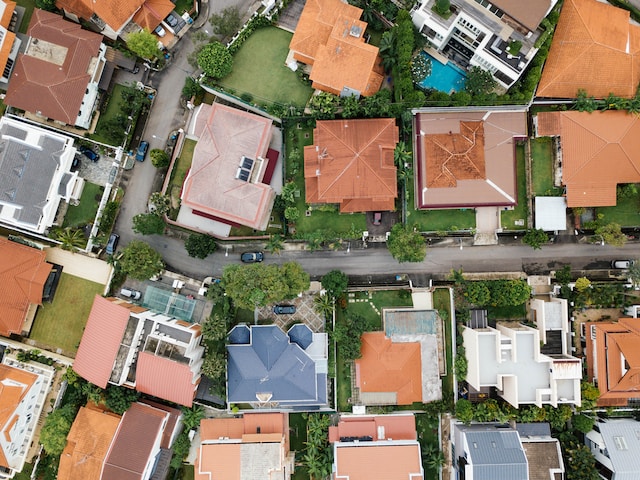Your home’s roof is far more than just a decorative feature. It plays a critical role in keeping your family safe and secure from the elements, as well as potential intruders.

Unfortunately, many homeowners fail to recognize the importance of proper roof design when it comes to ensuring their family’s protection. In this blog post, we’ll explore the different types of roofs available for your home and highlight the key factors you should consider when choosing a design that will keep your loved ones safe and secure for years to come. So sit back, grab a cup of coffee, and let’s dive into this critical topic together!
Check Your Roof And Consider A Complete Replacement
Your roof is an essential component of your home, and its condition should never be taken for granted. Over time, weather conditions such as heavy rain, snow, or strong winds can cause damage to your roof that may not always be visible from the ground. That’s why it’s crucial to inspect your roof regularly.
If you notice any signs of wear and tear on your roof, such as missing shingles or cracks in the tiles, it might be time to consider a complete replacement. A damaged roof can lead to more significant problems down the line if left untreated.
Replacing a faulty or aging roof will not only ensure that your family stays safe but also adds value to your property. It gives peace of mind knowing that you don’t have to worry about leaks during a stormy night. When considering complete roof replacements, take into account factors such as durability and energy efficiency when selecting new materials. You want something that will last for years without requiring too much maintenance while keeping those utility bills low. Also, make sure to work with a licensed contractor to ensure the job is done properly and to abide by all applicable safety regulations.
Different Types of Roofs
The design and type of roof you choose for your home can have a significant impact on its overall safety and security. There are various types of roofs to consider, each with its unique features and benefits.
One popular option is the gable roof, which is recognizable by its triangular shape. This type of roof offers excellent ventilation and allows for easy water drainage, making it ideal in areas prone to heavy rainfall or snow.
Another common choice is the hip roof, which slopes down on all four sides. Hip roofs provide extra stability during windy weather conditions while also offering additional attic space.
For those looking for a more modern aesthetic, a flat roof may be the way to go. Flat roofs are often used in commercial buildings but can also be installed in residential properties. They offer ample outdoor living space while also providing energy-saving benefits.
The Critical Role of Roof Design
The design of a roof plays a crucial role in ensuring the safety and security of your family. A well-designed roof should be able to withstand different weather conditions while also providing proper ventilation, insulation, and adequate natural lighting.
Roof pitch, for example, is an important factor affecting your roof’s overall structural integrity. The pitch determines how much weight the roof can hold, which is especially important during heavy snow or rainfall.
Another critical factor to consider when designing a roof is its material. Different materials have varying lifespans and durability levels which affect their ability to protect against harsh weather elements such as hailstorms or strong winds.
Additionally, proper installation techniques are essential to ensure that your roofing system functions optimally. Proper ventilation systems must also be installed alongside the roofing system to prevent moisture buildup within the house’s attic space.
Factors to Consider When Choosing a Roof Design
When choosing a roof design, there are several factors to consider. First and foremost, the climate in your area plays a crucial role in determining the best type of roof for your home. For instance, if you live in an area with heavy snowfall or rainfall, you may want to opt for a steeply pitched roof that allows water to run off easily.
The architectural design of your home is another aspect to take into account. You want to choose a roof design that complements the overall aesthetic of your house. For example, if you have a traditional-style home, then shingles or tiles may be more appropriate than metal roofing.
The durability and lifespan of different roofing materials should also be considered when selecting a roof design. Some materials like asphalt shingles require regular maintenance while others like metal can last up to 50 years without needing repairs.
Additionally, it’s important to think about energy efficiency when choosing a roof design. Certain types of roofs like green roofs or solar panels can help reduce energy costs by providing insulation or generating electricity.
To sum up, your roof is an important aspect of your home that you should never overlook. It plays a critical role in ensuring the safety and security of your family by protecting them from harsh weather conditions and intruders.
When choosing a roof design, it’s essential to consider various factors such as durability, maintenance requirements, energy efficiency, cost-effectiveness, and aesthetics. A professional roofing contractor can help you select the best material and design that meets these criteria while also aligning with your personal preferences.
Whether constructing a new home or replacing an old roof, investing in quality roofing materials and expert installation services will give you peace of mind knowing that your loved ones are protected from external elements. So take care of your roof today for a brighter tomorrow!
Related Posts:
- The Benefits of Hiring a Professional Roofing Contractor
- Helpful Guide For Finding Good Roofing Service
- Eco-Friendly Roofing Solutions for Your Home or Business
- Choosing the Most Suitable Roofing Materials: A Guide for Moms
- Looking for a Roofing Contractor? Here’s How to Hire One